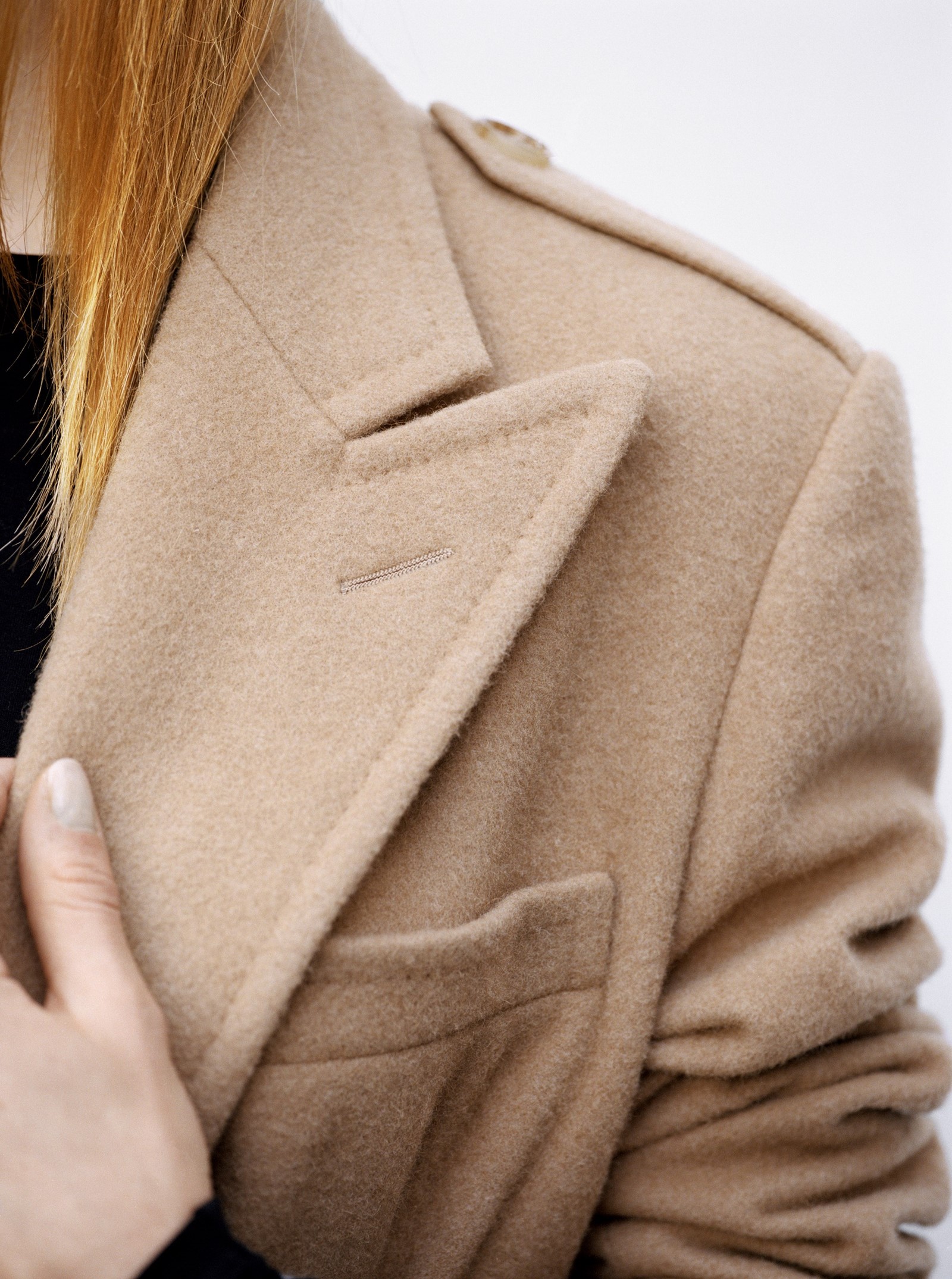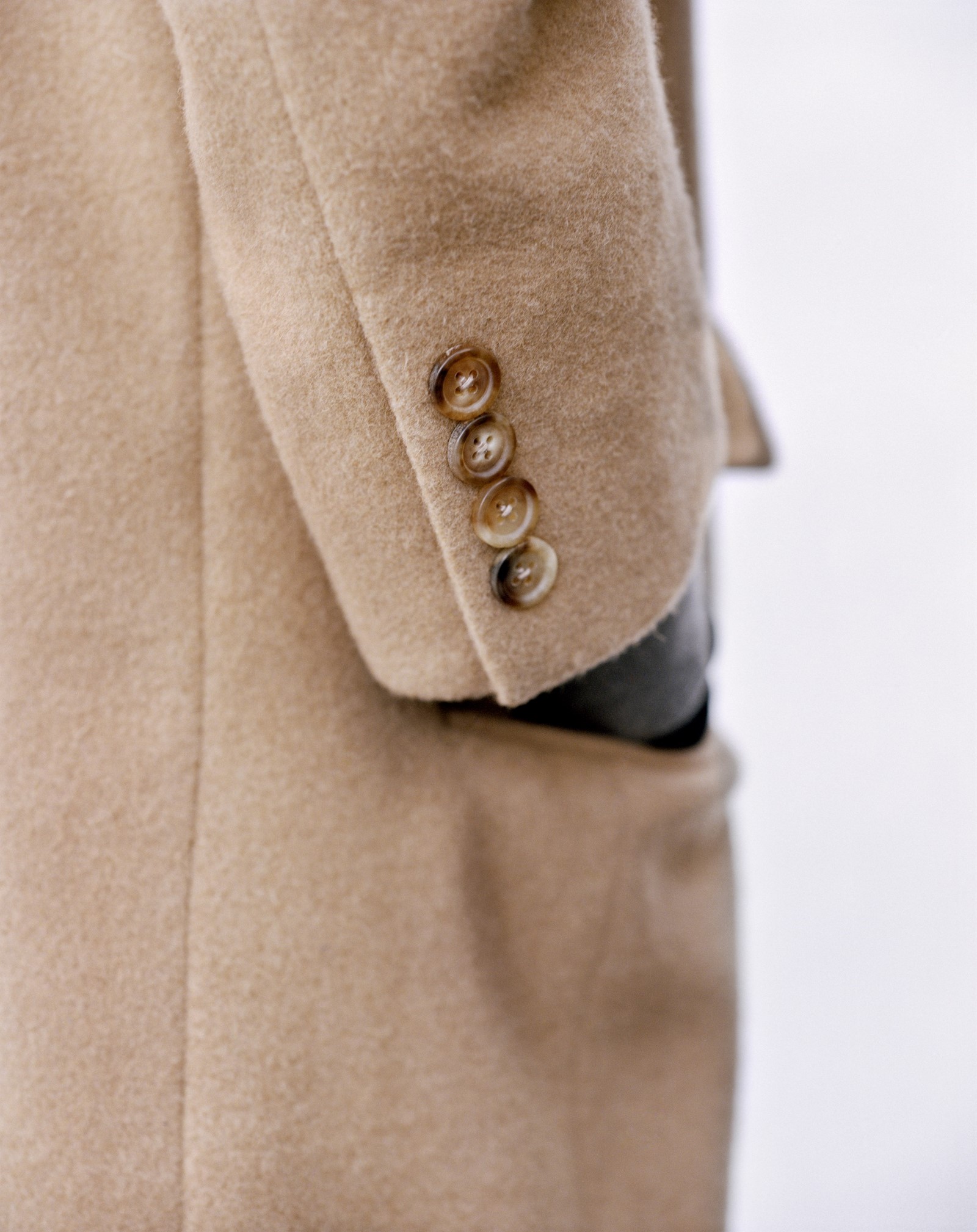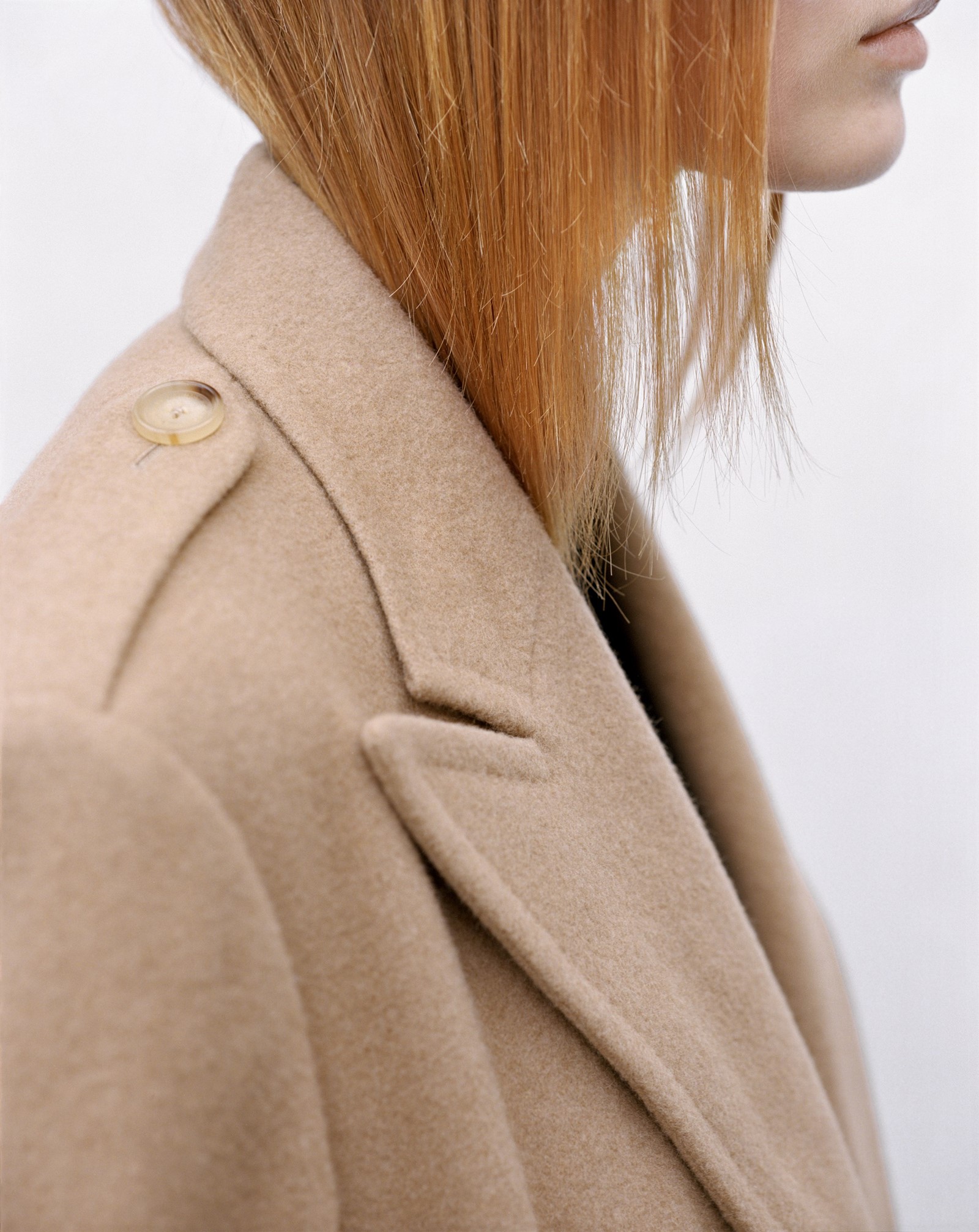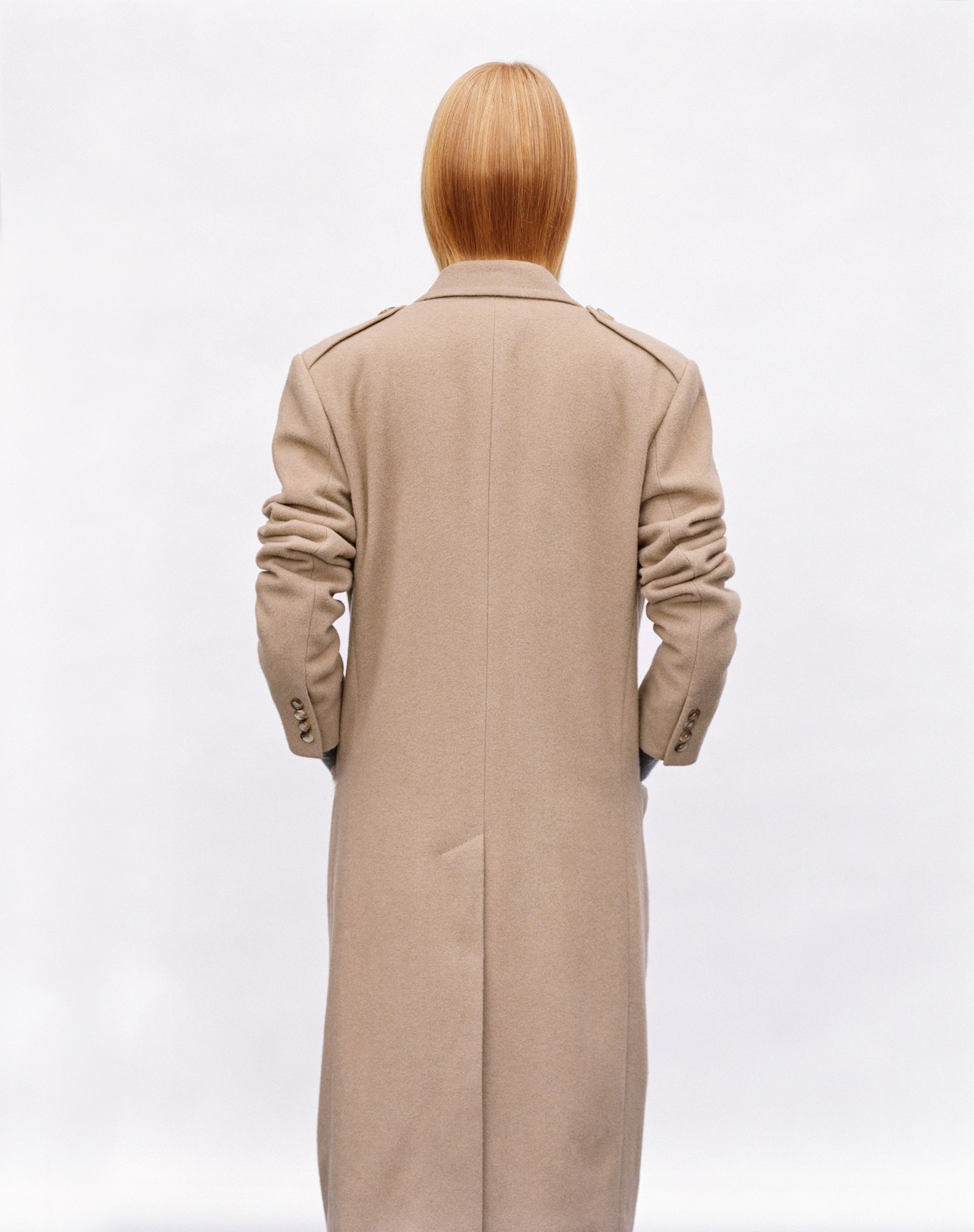Over the course of time, some items of clothing become so iconic, are referred to with such unthinking regularity, that their very names become distanced from the core principles on which they were first founded. The camel coat is one such example. Named not only for its characteristic rich, dusty hue, this garment is so called because it is made from the ultra-soft undercoat of the Bactrian camel – a two-humped species native to Central Asia. The insulating properties of this fine fleece made it strikingly practical, while its outward properties represented the height of luxury; Tartan and Mongolian rulers would order swathes of cloth woven from it, creating silky layers which would protect the wearer from both extreme heat and cold. Over the course of the centuries that followed, this precious cargo was shipped back and forth though India’s treacherous mountain passes by merchants hoping to sell it to Indian rulers.
Given its versatile properties, it’s little surprise that camel hair was quickly appropriated by sportsmen looking to wrap up after a game of polo (contrary to popular belief, the sport originated not in the U.S. but in Persia, where it was used to train cavalry units as early at the 6th century B.C.; it spread to India in the 13th century and was picked up by British and American troops some 600 years later, in the 19th century). Tied at the waist with a belt for ease, and with broad lapels which could quickly be turned up to guard against the wind, it was the ideal warming wraparound.


The arrival of the sport of polo in the U.S. shortly before the First World War caused a flurry of excitement; before long, spectators were seeking out the players’ warm coats, welcoming appropriation by college students – it is rumoured to have been introduced at Yale by the younger brother of polo legend Tommy Hitchcock. By the 1920s, the camel coat was a staple for any wardrobe, sporting or otherwise.
“What I believe in is the timelessness of an attitude, the timelessness of style” – Ralph Lauren
Truly iconic pieces never age, of course, and by the late 1960s, when a young Ralph Lauren was in the process of building his brand on the founding ideals of the sport (“polo has a stylishness to it,” he once told Oprah) he was quick to investigate its sartorial foundations. His first ever menswear collection, entitled ‘Polo’ in deference to its origins, later grew to become the company’s flagship brand, while its logo, a polo player on horseback, has become a legendary visual motif in itself. Thus, when Lauren turned his hand to womenswear in 1972, the camel coat was to be one of the first outerwear pieces he ever designed.

This fact serves to make the brand’s return to the camel coat for the contemporary customer all the more resonant; it has been attempted by many of fashion’s great craftspeople but few measure up to those of Ralph Lauren Collection, as The British Warmer, a new and yet inherently recognisable iteration of that ultimate classic, attests. Crafted from super-fine camel hair, just as it was in 12th-century Asia (although now it is sourced from a 250-year-old mill based in England), The British Warmer maintains all of the elegant signatures of its forerunners; a double-breasted silhouette, peak lapels, buttons made from genuine horn, shoulder epaulettes. And why change it? “What I believe in is the timelessness of an attitude, the timelessness of style,” Lauren tells AnOther. And clad in this iconic piece, we are inclined to agree.
Ralph Lauren Curated Collection of Timeless Design is available now.
Model Sofie Theobald at The Hive; Hair Sophie Anderson; Photography assistant Dan Clarke; Production Beth Mingay
